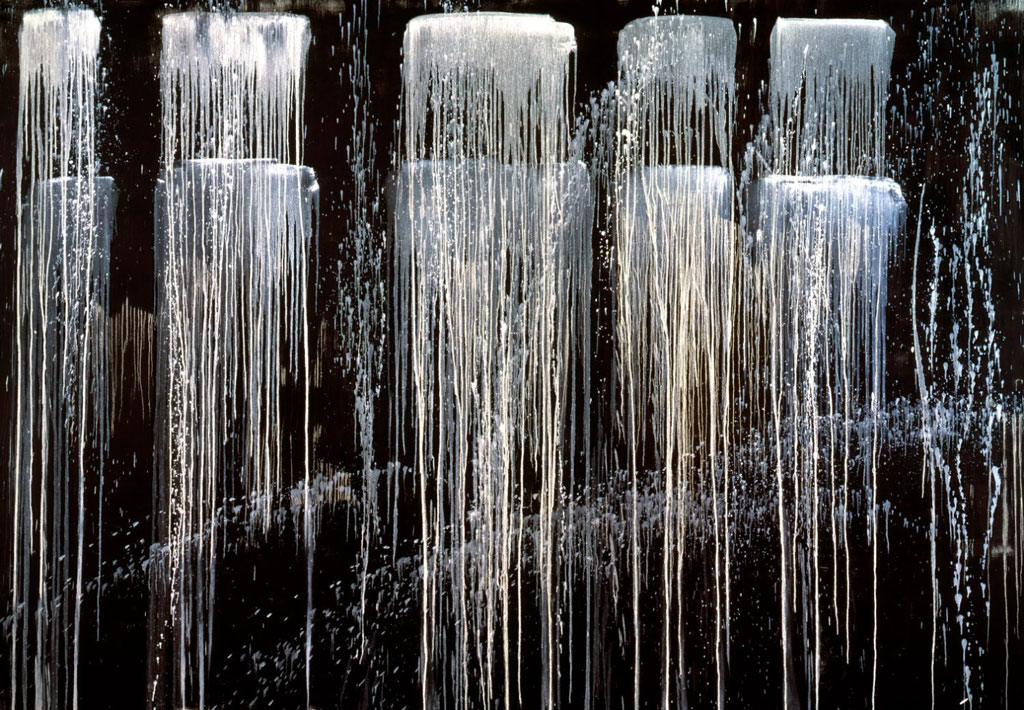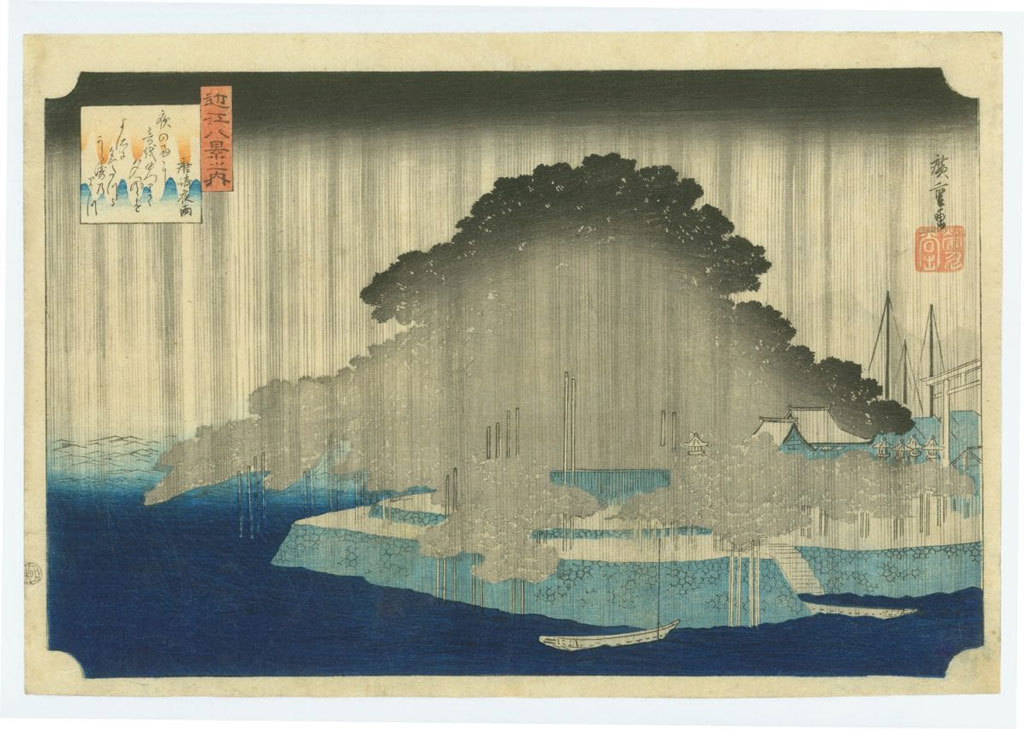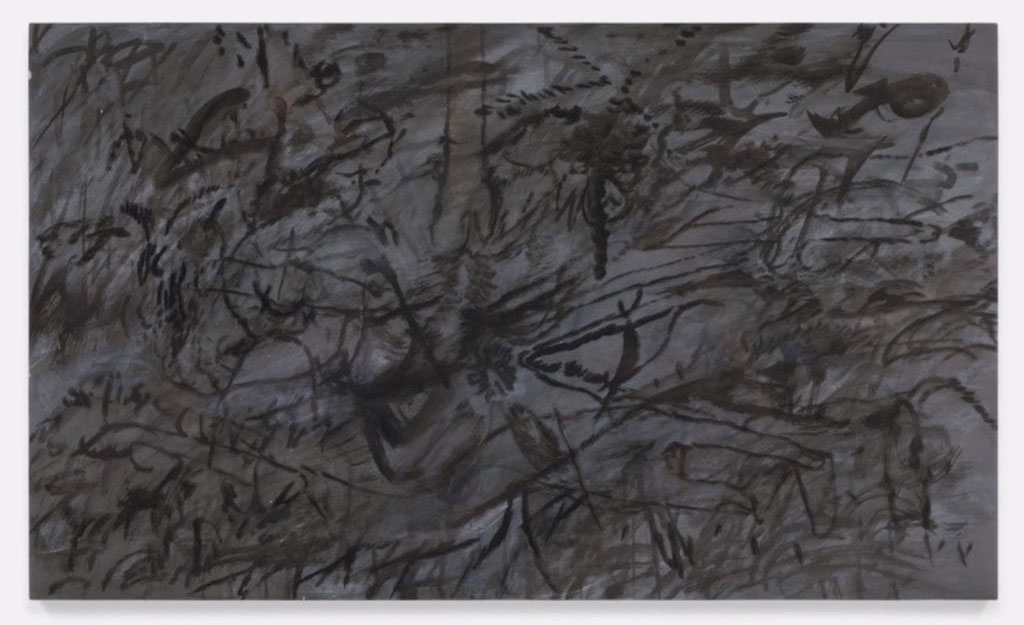ART-PRESENTATION: Visible Traces (Mountain Water Air)
![Alighiero Boetti, Map (Mettere il mondo al mondo [Putting the world into the world], 1983, Embroidery on canvas, 115.3 x 180.3 x 2.9 cm, Artwork © 2019 Artists Rights Society (ARS), New York / SIAE, Rome](http://www.dreamideamachine.com/web/wp-content/uploads/2019/06/Boetti-002139-crop-1200x808.jpg) With a career that has spanned over half a century, Pat Steir is a leading force in the development of Postmodern abstraction. Her paintings and prints exist in conversation with various art historical movements—from Abstract Expressionism to traditional Chinese painting. Working with these influences, the artist creates meditative, often large-scale pieces that frequently reference the natural world.
With a career that has spanned over half a century, Pat Steir is a leading force in the development of Postmodern abstraction. Her paintings and prints exist in conversation with various art historical movements—from Abstract Expressionism to traditional Chinese painting. Working with these influences, the artist creates meditative, often large-scale pieces that frequently reference the natural world.
By Efi Michalarou
Photo: Lévy Gorvy Gallery Archive
The exhibition “Visible Traces (Mountain Water Air)” include a selection of Pat Steir’s paintings alongside numerous works the artist has said she “hums to” in her mind, art from centuries past, such as historical Chinese scrolls and Kongo sculpture, and works by artists with whom Steir has engaged in ongoing and inspiring dialogue. Central to the works Steir has selected for this exhibition are questions regarding the nature of abstraction. At what point does an image become abstract? Since she rose to prominence in the 1970s, Steir has channeled inspiration from East Asian art, Buddhist and Taoist philosophy, European Romanticism, American Minimalism, and Conceptualism into paintings that masterfully synthesize gesture, process, and reference. Among the artists featured in “Visible Traces (Mountain Water Air)” are the 18th Century Edo artists Hokusai and Hiroshige, 19tt Century Romantic Victor Hugo, and 20th Century contemporaries such as Alighiero Boetti, Cy Twombly, and Agnes Martin, whom Steir visited in New Mexico every August for thirty years. Works by Steir’s peers such as Joan Jonas, Mary Heilmann, Brice Marden, Helen Marden, Julie Mehretu, Ugo Rondinone, Stanley Whitney, and Terry Winters also are included in the exhibition. Together, the paintings and sculptures on view offer a framework in which to consider Steir’s long commitment to the radical freedom that she has explained as, “being more attached to the process than the conclusion”. This liberation has been forged through her relationships to other artists and artworks, through what she has learned from and with them about simplicity, chance, and structure. Visible Traces reveals something of this resonant, ahistorical exchange on such abiding concerns as the potential of paint, the nuance of method, and the resonance of affinity. Born in Newark, New Jersey in 1940, Pat Steir studied art and philosophy at Boston University and received her BFA from the Pratt Institute in 1962. In 1963, she was invited to participate in her first group show at The High Museum in Atlanta. The next year, her work appeared in group shows at the Philadelphia Museum of Art and in The Museum of Modern Art’s Drawing exhibition, making her a key figure among the first wave of women artists to gain prominence in the New York art world. In the mid-1960s, Steir was appointed an Art Director at Harper and Row Publishing Company in New York. She is a founding board member of Printed Matter Bookshop, “HERESIES: A Feminist Publication on Art and Politics, and Semiotext(e)”. Steir was lauded in the early 1970s for her monochromatic canvases featuring various iconographic symbols. This series marks the artist’s first engagement with questions of representation and semantic signification. Steir continues to explore these issues, working to unfix the tradition of representation in landscape painting, instead evoking the meaning of landscape without imagery as such. The influence of Conceptual art, French philosophy, and East Asian art and philosophy moved her to begin creating room-size installations in the mid-1970s. Here, the artist formulated alternate worlds and new visions of reality. In the late 1970s, Steir traveled extensively in the United States and eventually lived in Europe where numerous galleries regularly presented her work. By 1988, Steir began to experiment with pouring and flinging thin layers of white paint onto canvas, releasing herself from conscious consideration of imagery and composition and allowing the indexical trace of her process to become the image itself. Steir is deeply inspired by Taoism and Buddhism, and her working methods transcend the divide between figuration and abstraction. Intentionally deviating from the gestural flatness in the work of Pollock and other Abstract Expressionists, Steir instead explores a contemplative condition of unbound perception.
Info: Curator: Pat Steir, Lévy Gorvy Gallery, 909 Madison Avenue, New York, Duration: 25/6-10/8/19, Days & Hours: Tue-Sat 11:00-18:00, www.levygorvy.com




